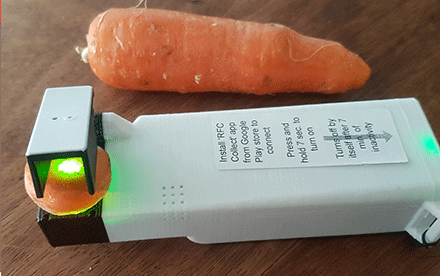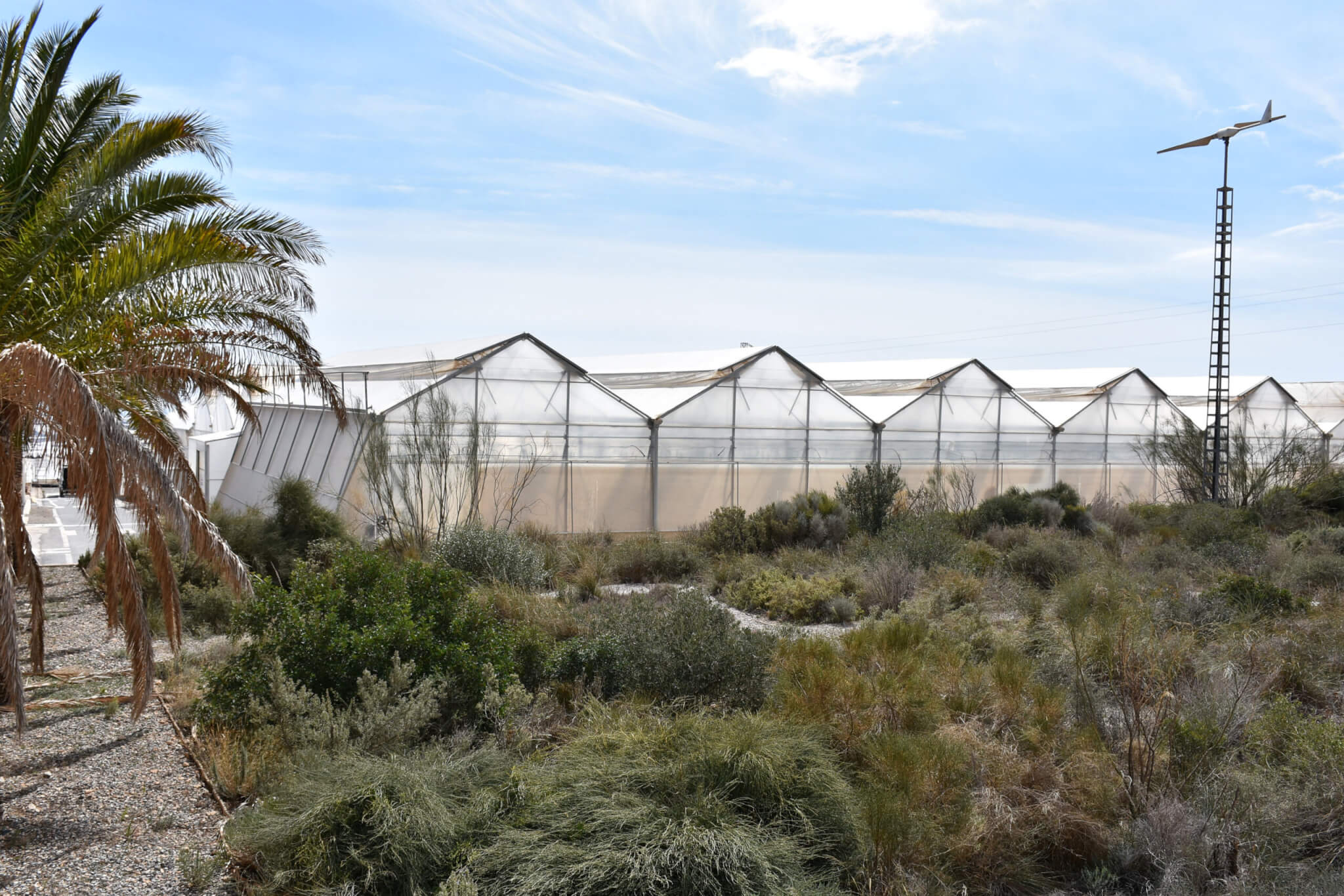The aim of food is to nourish us; to provide us with energy necessary for growth and health. But it is debateable whether growing food for nutrition has been the priority in our industrialised food system.
Professor Steve McGrath, head of sustainable agriculture sciences at Rothamsted Research, one of the oldest agricultural research institutes in the world, was part of the team that analysed 160 years’ worth of wheat samples to monitor and investigate changing nutritional values.
“It’s the longest experiment in the world,” McGrath explains. “The oldest samples are in huge bottles, they look like Victorian sweet jars that are sealed full of grain, and they’ve been sampled around every five years ever since.”
In their paper, McGrath and his colleagues found that the mineral density in wheat had decreased significantly over time.
“It was really quite a shock that the concentration of essential mineral micro-nutrients has decreased, and some of the macro-nutrients as well, things like protein concentration have decreased,” McGrath reveals.
“It made us realise that basically all of the efforts to increase yield through advances in crop breeding, crop protection and fertilisation, has led to this ‘dilution effect’.”

This dilution effect means that as the plant produces more wheat with higher yields, the concentration of nutrients decreases. According to McGrath, this is why organic produce might be more nutritious.
“Quite often they’re grown at a slightly lower yield level because the inputs are lower,” he explains. “That reverses this dilution effect that we talked about in the opposite direction, so when our crops have low yield, they tend to have higher concentrations of nutrients.”
McGrath points to the development of dwarf wheat varieties in the 1960s, also known as the Green Revolution, as a pivotal point in this downwards trend.
“The startling result was that as you through time, it looked fine up until the 60s and when yields really shot up, these micro-nutrient concentrations in the material went down.”
Since this obsession with yield is not confined to wheat production, could this apply to other crops? According to McGrath: “This is where we’ve got much less evidence. Nobody else has been keeping long term samples of vegetables or anything else you care to mention.”
This is something the Growing Real Food for Nutrition (GRFFN) programme hopes to rectify. Run by Matthew Adams and Elizabeth Westaway, a small team based at the Matara Centre in Gloucester, the mission is to accurately measure the nutrient density of food and investigate the contributing factors.
In collaboration with the US-based Bionutrient Association, the duo are developing a bionutrient meter that will test all types of food in real-time for its nutrient density.
Co-founder Matthew Adams says: “The intention is to set the standard for nourishing, nutrient dense fruit and vegetables so both growers and citizens can make informed choices about the quality of the food they grow and eat.”

Being able to make informed decisions is significant according to Adams, because not all fruit and vegetables are nutritionally equal. “To give you an example, in carrots we found that with antioxidants and polyphenols, there were 200 times more in the best samples compared to the worst samples.”
The machine shines an LED light on the carrot, and it gives a unique signature based on its chemical makeup and density.
Using carrots as an example; conventional nutritional analysis of hundreds of different carrots in a lab is necessary to translate the different signatures into nutritional information.
Once enough data is collected, and a lot will be required for accurate sampling, it could be available to consumers to test for nutrient density themselves.
Would access to this knowledge be a game changer for consumers? Westaway certainly thinks so. “It’s going to massively increase transparency in the supply chain,” she says.
“It’s probably going to end up as an app, so it’s going to be really easy to use. It will enable [them] to make an informed choice of whether to buy that carrot with poor nutritional value.”
Freely admitting that nutrition is a misunderstood and highly complex realm, in a parallel project GRFFN is exploring more holistic ways of measuring and growing food of high nutritional value.
GRFFN want to define food of excellent nutrition based on four criteria; good taste, resistant to pests and disease, high yield and uniformed growth, and longer shelf life, which they are trialling by growing food in four different ways within one quadrant.

According to Adams, when produce fulfils these four requirements, this is when we can start to consider this as nutrient dense food.
“Nutrition is really tricky to nail down in terms of what is good nutrition. In garlic, there are over 20,000 discrete nutrients,” says Adams.
“How do you describe what is nutritious? It’s a total package. We’re a society that thinks in silos. We need to be thinking more holistically, we need to be looking at everything.”
While verging on social philosophy and inference rather than hard science, the logic rings true. Food is meant to provide us with energy and good health, but it also nourishes us in other ways; it can delight the senses, bring us together as communities, create biodiverse habitats for species, and even mitigate climate change.
It’s time to look beyond yield and profit as the barometer of success and start to focus on nourishing ourselves, in all senses of the word.
Nutritionally enhanced or Frankenfoods?
Vitamin D enriched mushrooms. In 2016, Tesco launched a mushroom grown under enhanced light to contain more Vitamin D due to deficiency concerns.
Healthy heart tomatoes in Japan. Using the controversial technology genome editing, Japanese seed company Sanatech have recently introduced a tomato that contains high levels of gamma-aminobutyric acid (GABA), an amino acid believed to aid relaxation and help lower blood pressure.
Genetically modified golden rice. Developed by the Rockefeller Foundation and agrochemical giant Syngenta to increase Vitamin A in diets. It has been approved for use in the Philippines, USA and Canada.









I think this is a really interesting article, thank you so much for this information. I am very excited about checking for nutrient density, and appreciate the complexities of food. One concern I have is that this could create waste? Food found to be ‘deficient’ might be rejected, humans are so fickle, we reject a carrot if it is not the correct shape! Perhaps this is where GRFFN comes into its own; finding ways of growing food which will be acceptable and so avoid waste.
I take your point about ‘nutritionally enhanced or Frankenfoods?’. I think the former, as long as it is produced safely. There is so little vitamin D in foods available in the Uk and we do not fortify as much as the US. I think I would prefer the mushrooms over a supplement; after all we cannot be sure supplements work in the same way as the nutrient in the food, so I would hope the vitamin D enriched mushrooms were better, but the dose would be much lower than achievable in a supplement unfortunately. I am less sure about GM rice, although I appreciate the devasting blindness caused by a lack of vitamin A in children. I am aware there are other more successful approaches. Thank you again.
Yes hopefully this might incentivise famers to grow for nutrition as well as for yield (and maybe even environmental benefit one day who knows!) It goes back to that management quote, you can’t manage what you can’t measure. Hopefully if nutritional value of food was more transparent more effort would go into growing it for these purposes.
I guess it could be a possibility that there is waste while the market reorientated to this new barometer of success.
However, how much impact this transparency has depends how widely used these bionutrient meters are.
With the nutritionally enhanced or frankenfoods, it’s an interesting argument. Supporters would say that they are providing nutritional support for those who struggle to get it, like vitamin D for us in the summer months. Others might argue that it is the same business interests who also bombard us with ads for obesogenic food. What is standing in the way of healthy diets for people is not the lack of supply of healthy food (vegetables, pulses, cereals: a balanced diet essentially), but this is not favourable to the commercial interests of the food industry. You can add value much more effectively through ‘health foods’ like healthy heart tomatoes, rather than just promoting well-rounded diets with little processed foods. But we know the more you process something, the more you can add economic value for food businesses.
This is not to say there aren’t some good products that are healthy for people, but these health products are merely a sticking plaster over what is a dysfunctional food system, designed to maximise profits, and not human health.
Interesting piece by Michael Pollan who discusses the concept Nutritionism: (originally developed by Gyorgy Scrinis)
https://www.nytimes.com/2007/01/28/magazine/28nutritionism.t.html